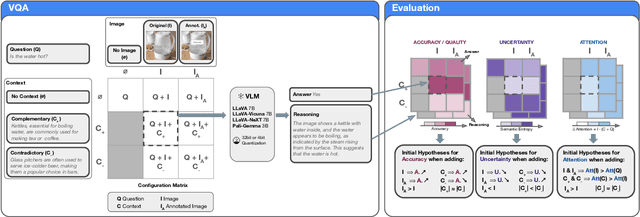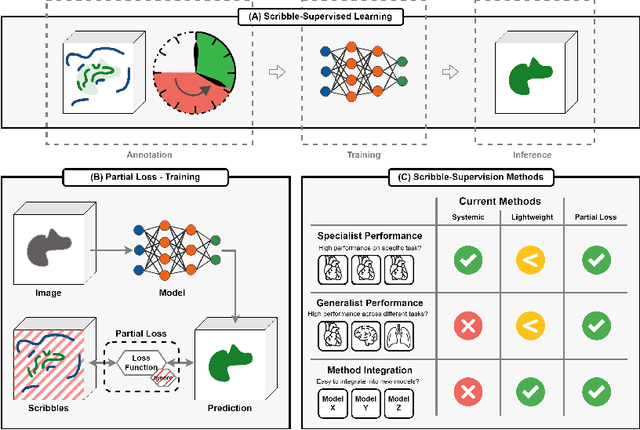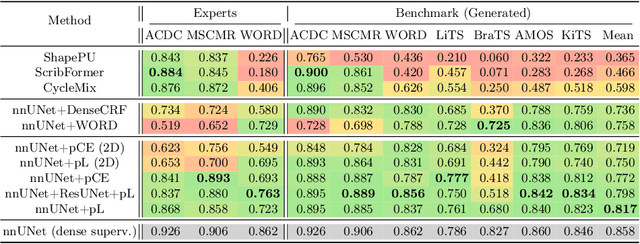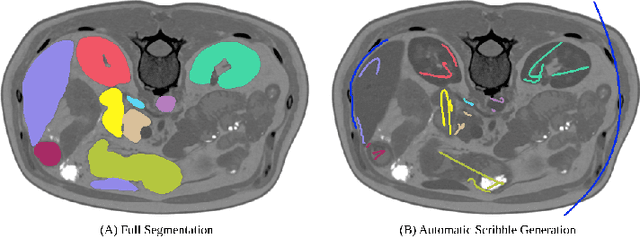Carsten Lüth
Why context matters in VQA and Reasoning: Semantic interventions for VLM input modalities
Oct 02, 2024



Abstract:The various limitations of Generative AI, such as hallucinations and model failures, have made it crucial to understand the role of different modalities in Visual Language Model (VLM) predictions. Our work investigates how the integration of information from image and text modalities influences the performance and behavior of VLMs in visual question answering (VQA) and reasoning tasks. We measure this effect through answer accuracy, reasoning quality, model uncertainty, and modality relevance. We study the interplay between text and image modalities in different configurations where visual content is essential for solving the VQA task. Our contributions include (1) the Semantic Interventions (SI)-VQA dataset, (2) a benchmark study of various VLM architectures under different modality configurations, and (3) the Interactive Semantic Interventions (ISI) tool. The SI-VQA dataset serves as the foundation for the benchmark, while the ISI tool provides an interface to test and apply semantic interventions in image and text inputs, enabling more fine-grained analysis. Our results show that complementary information between modalities improves answer and reasoning quality, while contradictory information harms model performance and confidence. Image text annotations have minimal impact on accuracy and uncertainty, slightly increasing image relevance. Attention analysis confirms the dominant role of image inputs over text in VQA tasks. In this study, we evaluate state-of-the-art VLMs that allow us to extract attention coefficients for each modality. A key finding is PaliGemma's harmful overconfidence, which poses a higher risk of silent failures compared to the LLaVA models. This work sets the foundation for rigorous analysis of modality integration, supported by datasets specifically designed for this purpose.
Embarrassingly Simple Scribble Supervision for 3D Medical Segmentation
Mar 19, 2024



Abstract:Traditionally, segmentation algorithms require dense annotations for training, demanding significant annotation efforts, particularly within the 3D medical imaging field. Scribble-supervised learning emerges as a possible solution to this challenge, promising a reduction in annotation efforts when creating large-scale datasets. Recently, a plethora of methods for optimized learning from scribbles have been proposed, but have so far failed to position scribble annotation as a beneficial alternative. We relate this shortcoming to two major issues: 1) the complex nature of many methods which deeply ties them to the underlying segmentation model, thus preventing a migration to more powerful state-of-the-art models as the field progresses and 2) the lack of a systematic evaluation to validate consistent performance across the broader medical domain, resulting in a lack of trust when applying these methods to new segmentation problems. To address these issues, we propose a comprehensive scribble supervision benchmark consisting of seven datasets covering a diverse set of anatomies and pathologies imaged with varying modalities. We furthermore propose the systematic use of partial losses, i.e. losses that are only computed on annotated voxels. Contrary to most existing methods, these losses can be seamlessly integrated into state-of-the-art segmentation methods, enabling them to learn from scribble annotations while preserving their original loss formulations. Our evaluation using nnU-Net reveals that while most existing methods suffer from a lack of generalization, the proposed approach consistently delivers state-of-the-art performance. Thanks to its simplicity, our approach presents an embarrassingly simple yet effective solution to the challenges of scribble supervision. Source code as well as our extensive scribble benchmarking suite will be made publicly available upon publication.
Conditional Invertible Neural Networks for Diverse Image-to-Image Translation
May 05, 2021



Abstract:We introduce a new architecture called a conditional invertible neural network (cINN), and use it to address the task of diverse image-to-image translation for natural images. This is not easily possible with existing INN models due to some fundamental limitations. The cINN combines the purely generative INN model with an unconstrained feed-forward network, which efficiently preprocesses the conditioning image into maximally informative features. All parameters of a cINN are jointly optimized with a stable, maximum likelihood-based training procedure. Even though INN-based models have received far less attention in the literature than GANs, they have been shown to have some remarkable properties absent in GANs, e.g. apparent immunity to mode collapse. We find that our cINNs leverage these properties for image-to-image translation, demonstrated on day to night translation and image colorization. Furthermore, we take advantage of our bidirectional cINN architecture to explore and manipulate emergent properties of the latent space, such as changing the image style in an intuitive way.
Guided Image Generation with Conditional Invertible Neural Networks
Jul 10, 2019



Abstract:In this work, we address the task of natural image generation guided by a conditioning input. We introduce a new architecture called conditional invertible neural network (cINN). The cINN combines the purely generative INN model with an unconstrained feed-forward network, which efficiently preprocesses the conditioning input into useful features. All parameters of the cINN are jointly optimized with a stable, maximum likelihood-based training procedure. By construction, the cINN does not experience mode collapse and generates diverse samples, in contrast to e.g. cGANs. At the same time our model produces sharp images since no reconstruction loss is required, in contrast to e.g. VAEs. We demonstrate these properties for the tasks of MNIST digit generation and image colorization. Furthermore, we take advantage of our bi-directional cINN architecture to explore and manipulate emergent properties of the latent space, such as changing the image style in an intuitive way.
 Add to Chrome
Add to Chrome Add to Firefox
Add to Firefox Add to Edge
Add to Edge